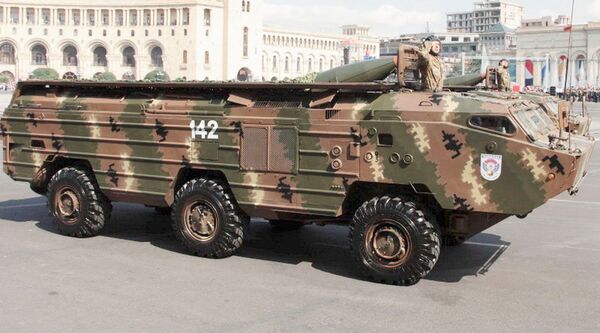
Seen in Armenian service, the Soviet-era OTR-21 Tochka close-range ballistic missile system was reportedly used by Ukraine to attack a Russian military airfield on 25 February. (Ministry of Defence of Armenia)
Ukraine reportedly attacked a Russian airbase on 25 February, marking the first time that Kyiv conducted an offensive military action outside of its national borders since Russia launched its renewed invasion of the country on 24 February.
The stated attack, the supposed aftermath of which was widely circulated on social media along with images of damaged and burning facilities and aircraft, saw Millerovo Air Base (AB) in Russia's Rostov region seemingly struck with multiple ballistic missiles fired from Ukraine.
The Ministry of Defence (MoD) of Ukraine had not responded to a Janes request for confirmation and comment at the time of publication. However, a senior Janes Russia and open-source intelligence (OSINT) analyst confirmed that the location shown in the aftermath images of the burning facility is Millerovo AB, some 20 km inside the Russian border with Ukraine.
According to reports, the base was hit by an undisclosed number of surface-launched OTR-21 Tochka (SS-21 ‘Scarab'/9M79) ballistic missiles, with imagery showing facilities and at least one Sukhoi Su-30SM ‘Flanker-H' combat aircraft of the Russian Aerospace Forces (VKS) 31st Guards Fighter Aviation Regiment on fire.
As noted by Janes Weapons: Strategic , the Tochka is a close-range ballistic missile (CRBM), with its 9M79 missiles having a range of between 15 and 70 km. The 9M79-series missiles can be armed with unitary high-explosive blast fragmentation and submunition warheads. The Ukrainian Ground Forces is understood to have received or inherited 500 such missiles, although it is not known how many remain in its inventory.
Looking to read the full article?
Gain unlimited access to Janes news and more...
